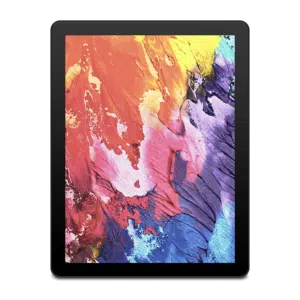Electronic Paper Displays in Education and Beyond
Electronic Paper Displays in Education and Beyond
Blog Article
Display engineering is becoming an integral element of our everyday lives, appearing in everything from smartphones and e-readers to large-scale marketing panels. On the list of diverse range of large E ink display, OLED (Organic Light-Emitting Diodes), and LED (Light-Emitting Diodes) have surfaced as some of the very most widely discussed options. While each kind acts its own distinctive function, their variations in functions, efficiency, and use cases make sure they are ideal for unique applications. Let's take a sooner go through the important traits of the display technologies.
Electronic Paper displays (ePaper)
Electronic Paper displays, also called ePaper or Electronic Ink displays, are made to simulate the looks and readability of old-fashioned Ink on paper. That engineering employs small microcapsules comprising priced black and white contaminants halted in a clear fluid. When an electric subject is used, the contaminants proceed to each side of the tablet, producing a visible image. The picture stays static until still another electric area is used, which makes it well suited for displaying text-based content such as for instance publications, papers, and e-readers.

Among the main advantages of ePaper displays is their low power consumption. Unlike standard LCD
Knowledge Electronic Paper displays
A digital Paper display (ePaper) mimics the looks of Ink on paper. Unlike conventional monitors, ePaper utilizes its power to reveal surrounding light rather than emitting their own. This engineering not merely reduces vision strain but also offers unmatched readability in sunlight, making it suitable for e-readers and electronic signage solutions.
One standout feature of ePaper displays is their incredibly reduced energy consumption. Since they only use energy when adjusting content, ePaper displays are extremely effective and suitable for battery-powered devices. But, their renew prices are slower in comparison to OLED and LED displays, restraining their applicability to static or minimally active content.
OLED displays
OLED displays are noted for their stunning visible quality, providing vibrant colors, deep blacks, and excellent contrast. Each pixel in a OLED display produces its gentle, eliminating the requirement for a backlight. This not just permits thinner, more light styles but in addition benefits in greater power effectiveness in comparison to LED using scenarios.
One crucial advantageous asset of OLED displays is their flexibility. They can be made in circular or collapsible styles, creating them common in cutting-edge smartphones and wearable devices. However, OLED screens include difficulties, such as for instance susceptibility to burn-in and faster lifespans in comparison to other technologies.
LED displays
LED displays, the most common of the three, depend on a backlit system to light their pixels. Whilst not as creatively striking as OLED 13.3" epaper display, LEDs are highly sturdy, long-lasting, and cost-effective. These features make sure they are suitable for a greater range of programs, including TVs, pc displays, and outdoor advertising.
LED displays an average of conduct properly with regards to illumination, making them the ideal choice for settings with high ambient light. Nevertheless, they flunk in reaching exactly the same deep contrast and shade accuracy as OLED technology.

Final Contrast
When choosing between ePaper, OLED, and LED displays, the choice depends mainly on the intended purpose. For static content like reading or signage, ePaper excels using its reduced power usage and high presence in organic light. OLED shines in purposes wherever vivid shades and flexibility are paramount. Meanwhile, LED stays a trusted and cost-efficient option for a number of general-purpose needs.
Each display engineering provides anything distinctive to the table, ensuring that there's a great selection for every situation. Knowledge these variations can help customers and businesses produce knowledgeable decisions that match their specific display requirements. Report this page